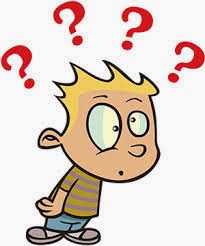... Non, mais et puis quoi encore ?
_______________________________________
Quel contenu ?
- Au cours de l'atelier, vous vous familiarisez avec les 4 principes du minimalisme, puis vous les mettez en application à partir de VOTRE documentation. Vous pouvez repartir avec vos propres documents retravaillés !
_______________________________________
Quels destinataires ?
- L'atelier est destiné à tout rédacteur/manager vraiment désireux de fournir (enfin !) l'information utile (... et peut-être cesser d'être la risée des utilisateurs qui n'aiment pas qu'on les prenne pour des handicapés du bulbe !)
_______________________________________
Quelle difficulté ?
Par exemple, que couvre le principe numéro 2 ("Anchor the tool in the task domain") ?
- Le minimalisme a été développé par des professionnels de l'analyse du comportement des utilisateurs. En atelier, nous clarifions et mettons en application le résultat de cette analyse.
_______________________________________
Quelle finalité ?
_______________________________________
Que rejeter ?
Eliminer ? Ciel ! Est-ce vraiment nécessaire ?
- L'utilisateur n'a pas besoin de trouver, dans un manuel, ce qu'il sait déjà : que sa tondeuse sert à couper le gazon et qu'une lame bien acérée peut couper un doigt de pied !
- Un Ch'ti est-il vraiment capable de démontrer la pertinence du minimalisme ?
_______________________________________
Où s'informer ?
- Si une information vous manque, n'hésitez pas à contacter [flacke [at] orange.fr]
_______________________________________
Quels coûts ?
95 heures de travail perdues par employé et par an...
_______________________________________
Quels commentaires ?
- Oui, mais, qu'en pensent les participants ?
Back to the sources
In an article dated April 2008, Bob Doyle provides a quasi-exhaustive recap about
the different methods of document design. Information Mapping (R) was developed in mid-60's by Robert Horn who identified 7 common"Information types" of a structured document:
Information Mapping (R) was developed in mid-60's by Robert Horn who identified 7 common"Information types" of a structured document:
- classification, concept, principle, procedure, process, structure, and fact.
Structured authoring
Information Mapping is considered the birth of Structured Writing as Mike West explains in "Structured writing, structured documentation".
Information Mapping is a set of tools:
"Structured documentation is a way of planning and implementing the various phases of a writing project; and we may think of structured writing as a set of tools and techniques to be used by writers during the writing phase of a project"
If Information Mapping is the toolbox, what is minimalism?
Minimalism ?
Information Mapping(R) was designed to help engineers document their programming work (reports, descriptions, etc.). Let's say it's a writing
guidance for non technical writers. Its structure is pretty rigid and
not really designed for task-oriented activities; it is more a classification of information.
Minimalism was developed in the late '80s by John M. Carroll, member of an IBM team:
"It was task orientation carried to an extreme. Minimalism meant small non-linear chunks readable in any order. It emphasized reading To Do, not reading To Know or To Learn, a phrase first introduced by Ginny Redish"
Minimalism puts the END_USER in the center of the information development, not the writer. It focuses on the user's tasks. The minimalist writer ignores writing tools, GUI or product description. His first questions are always:
"Who is the end-user? What does he want to achieve with this product?"
Outdated?
Dr. JoAnn Hackos, expert both in Information Mapping (IM) and minimalism, published an interesting research article showing that
"IM formatting makes absolutely no difference in user performance. It adds unnecessary words like the stem sentences: "Do we need all that glue?"
and considers "Information Mapping is outdated".
What is GLUE?
"Glue text is defined as transitional information intended to inform readers of what has come before or comes after a particular procedure, description, or explanation.
In topic-oriented authoring, which forms the basis for the DITA Model, transitional text has become problematic." (Dr. JoAnn Hackos)
So what ?
Talking of modular, DITA-ready documentation, professional technical writers don't need to think about facts, principles, structure, etc. In 2014, they focus on providing user-centered, useful and responsive documentation. The new challenges are findability and usability on Any device, anytime, anywhere... Do you really need a 4-paragraph Introduction on your Google Glass?







